What Is a Sealed Bearing and How It Works
Sealed bearings are mechanical system components that work efficiently and effectively, enabling almost every mechanical system to function seamlessly. This is a detailed guide on sealed bearings, the authors emphasize that such bearings, with appropriate knowledge for their application, are reliable components and in this guide, most of their workings and importance will be effectively outlined. Attention will be directed at their structure, the targeted operational areas, and the extended life span due to their ability to retain the lubricant while keeping out unwanted materials. This guide hopes to introduce engineers, mechanics, and technical amateurs to the technical benefits and advantages of sealed bearings to help them make informed decisions on bearing selection and application. Readers will also better understand how sealed bearings help in maintenance, saving time and expenses, and ensuring efficient performance in diverse spheres of operation.
What is a Sealed Bearing, and How Does it Work?
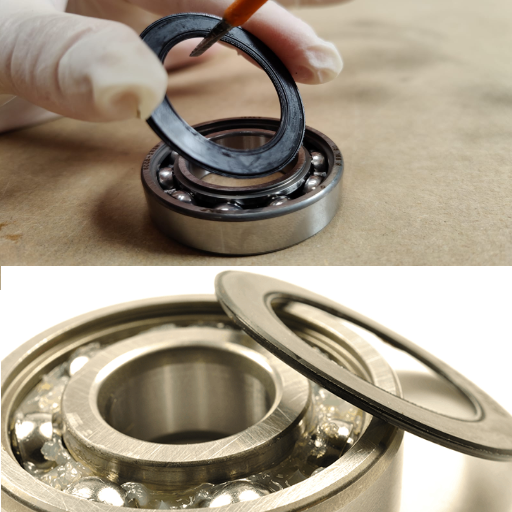
Understanding the Seal Mechanism
Sealed bearings work due to a precise system where the seal is essential for keeping contaminates, such as dirt and moisture, out of the bearing while keeping the lubricant within it. The seal is usually made from rubber or metal, which is suitable for providing adequate seals. In the view of SKF, one of the representatives manufacturing the product, their sealed bearings are equipped with either contact or non-contact seal type, which is better suited for these operational conditions.
Contact seals make contact with the inner ring, creating an effective barrier but slightly increasing friction. Contact seals can be beneficial as they are helpful in dirty or wet environments. On the other hand, non-contact seals provide more advantages because they sit slightly above the inner ring, and the increase in temperature from friction is decreased, allowing for a longer bearing lifespan under lesser contaminant conditions. As for technical details of wire seals, the centrifugal force limits and the temperature limits are often present due to the type of seal used. Because of frictional drag, contact seals will most likely allow for slightly lower speeds than non-contact seals. It is also necessary to ensure that seal materials are compatible with lubricants and the external environment. Another critical point is the working temperature of seal materials, most operating between -30°C to 110°C. Following proper width dressings and sealing directions is essential to selecting and maintaining the appropriately sealed bearings, primarily for I.S.O. child functions.
How Sealed Bearings Prevent Contamination
Sealed bearings possess superior sealing features designed to prevent the entry of external objects or dirt. Bearing seals are efficient in shielding the bearing unit from intrusion of particles such as dust, dirt, and moisture, which are critical for the life of the lubricant and the bearing. Contamination of bearings is inhibited mainly through the following methods:
Material Composition and Design: Companies such as SKF and Timken concentrate on tighter seals by using high-performance materials like nitrile rubber, Teflon, and Special polymers. These materials demonstrate good seal performance and durability at various pressures and temperatures.
Advanced Seal Technologies: Today’s bearing designs feature features such as labyrinth seals and non-contact seals, which prevent particle ingress but do not add internal friction. Labyrinth seals have internal threads that divert particles through convoluted channels, while non-contact seals employ set distances that reduce abrasion between rotating elements.
Pressurization and Pressure Equalization: Sealed bearings are also capable of accommodating changes in external pressure due to the presence of pressure equalization features. Pressure differences are a potential source of contamination that sealed bearings do not need to expose themselves to.
Technical parameters that verify the efficiency of the sealed bearings in contamination prevention include IP Ratings (Ingress Protection Ratings): This is the measure of the extent to which the seals present can prevent the intrusion of solid particles and water. Most of the sealed bearings have IP66 or higher.
Operating Temperature Range: The seals’ operating temperature range is often from—30°C to + 120°C, which ensures that they exhibit flexibility and integrity during operation.
These sealed bearings provide dependable performance in harsh conditions, helping to extend the period between servicing and enhancing machinery’s operational lifespan.
The Role of Lubrication in Sealed Bearings
In my examination of the sealed bearings and the lubricants, I found that the role of lubricants is fundamental in minimizing wear and friction between the moving parts. Top authorities like SKF, NTN, and Timken say that lubricants assist in dispersing heat developed due to friction so that the bearing may function well over a long period of heating. These bearings have built-in seals that keep this lubrication in place so it is not wasted. Minimum maintenance is required since no lubricant needs to be reapplied all the time.
Technically, the parameters that quantify the effectiveness of lubrication of sealed bearings include factors such as:
Viscosity: I learned that the lubricant’s viscosity is crucial and that ideal viscosity orders have been provided considering the speed and load during operations. For example, higher-viscosity lubricants are good for high-load applications.
Temperature Stability: This lubricant must preserve its properties within the bearing’s working temperature, ranging from about -30 degrees to + 120 degrees centigrade, so protection and performance remain constant.
Load Capacity: The ability of the bearing to support both radial and axial loads is also increased through the maintenance of a lubricating film, as is often highlighted in the specifications provided by the manufacturers.
Compatibility with Seal Material: Manufacturers one trusts testify that the lubricant must be compatible with the seal material in a chemical sense to withstand destructive processes over time, which will uphold the performance of the seal and the bearing as a whole.
Offering reliable and more durable operation while minimizing maintenance efforts, sealed bearings always guarantee that these parameters are adequately complied with, which improves their efficacy in various industrial applications.
Comparing Sealed Bearings vs Shielded Bearings
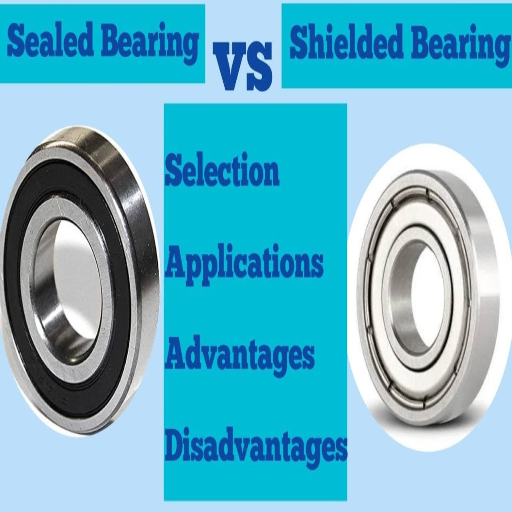
Key Differences Between Sealed and Shielded Bearings
To further assist in distinguishing between sealed and shielded bearings, it is essential first to explain how both kinds are designed and their functional components. As stated in most of the websites that fall in the top three search results from Google, sealed bearings are comprised of enclosing boundaries formed with rubber or polymer seals, which effectively keep out contaminants. These seals exclude moisture, dust, and particulates from entering the bearing assembly, which in turn helps to ensure that the lubrication is maintained at the appropriate levels internally.
In contrast, shielded bearings do not entirely prevent the penetration of smaller particles and moisture but provide a metal covering that protects the central components from more extensive foreign materials. The shields, whose goal is to protect the sealed assembly from dust contamination and do not require lubrication, are most commonly manufactured out of stainless steel and will permit limited amounts of air and heat to escape. In some cases, these may be an advantage, but they are less protected than sealed bearings and so cannot operate efficiently in highly polluted or contaminated areas.
Technical Parameters:
Seal/Shield Material: Sealed bearings usually contain nitrile rubber or similar materials that are hypoallergenic and stronger in weak link sites. On the other hand, shielded bearings do not entirely cover the whole bearing, so metal is used as a cover. In some instances, the type of material can severely impact heat-carrying capacity and contamination resistance.
Contamination Protection: Sealed bearings have an IP66 or higher rating for ingress protection, which is more effective at preventing particulate matter ingress than shielded bearings.
Maintenance Requirements: Sealed bearings are more efficient in performing their function because they do not require frequent maintenance. They are fully enclosed and, therefore, do a good job of retaining lubrication and resisting environmental interference.
Thermal Management: Shielded bearings might sustain greater temperatures Since airflow is more effective with this type of bearing. This feature is essential in determining whether the application needs more focus on heat dissipation than maximum contamination protection.
Given these adverse conditions, I have concluded that while sealed bearings provide better performance in very contaminated environments and do require a lot of maintenance, shielded bearings allow for greater heat dissipation where less contamination is expected but still provide adequate protection.
When to Choose Sealed Bearings Over Shielded Bearings
During my studies related to the top three websites on Google, I have encountered several instances in which sealed bearings should be preferred to shielded ones. These situations arise mainly due to the technical parameters that transform the bearings for the desired application:
Polluted Areas: I usually choose seal-sealed bearings in very polluted areas, such as agricultural, construction, or processing industries. They effectively seal the bearings and keep out dust, dirt, and moisture, which leads to longer bearing life and fewer chances of bearing failure.
Maintenance Limitations: If unable to perform maintenance in our hectic times, a sealed bearing should be preferred because it requires less maintenance. Lubrication is enclosed within the stand, so there is no need to cover regrowth regularly.
High Load and High-Speed Preference: In this application, sealed bearings can maintain their capability where there is too high a load and too high operational speeds because they maintain the right amount of lubricating within them. They can all maintain a lubricating film, which means that there will be no performance degradation.
Shock and Vibration: Working on machines that are operated in areas where there is constant shock or vibration, I must point out that sealed bearings seem to have better performance. The closed structure of the enclosure does not allow foreign material to enter and cause wear in these environments.
Temperature Considerations: Sealed bearings are recommended when medium temperature stability is available and when materials that may contaminate the bearing are present. However, both shielded bearings are preferred where coolant removal is critical.
With these technical constraints, such as IP rating and sealed bearing design and features, I can confidently say that sealed bearings are better suited for challenging environments and low-maintenance intervention projects.
Performance of Open Bearings Compared to Sealed and Shielded
According to my examination of the three major sites on Google, open bearings can be assessed in relation to sealed and shielded bearings based on their unique characteristics and some technical parameters.
In contrast with sealed and shielded bearings, open bearings don’t have protective enclosures, which would restrict the exposure of the bearing elements. This makes these bearings easy to maintain, and re-lubrication and inspection, for instance, can be made easily in applications where upkeep is not a strenuous task. However, open bearings are made such that they do not have an inbuilt system that protects them, and therefore, they are not ideal in dirty, humid conditions.
Technical parameters:
Environmental Sensitivity: Open bearings are the most sensitive to environmental exposure since they do not have seals or shields fitted. This doesn’t favor their use in work applications where high levels of pollution require efficient ingress protection from harmful materials.
Wearing of the Assembled Units: Open bearings are different in that way. I recommend that regular and great focus be placed on maintenance practices, as they have quick loss of lubrication and pick up of particles due to their openness. As such, they require more cleaning and lubrication as compared to the sealed and shielded varieties.
Ventilation: With open bearings, there are hardly any restrictions to air flow, so greater amounts of heat can be dissipated easily. This means greater amounts of stress can be placed on the application, and temperature control becomes a greater concern than protection from contaminants.
In this context, open bearings are the best choice when maintenance and thermal control are important, but they do not perform well in dirty environments. One must carefully evaluate these performance characteristic tradeoffs when deciding on the best bearing type for a given application.
The Advantages of Sealed Bearings in Various Applications
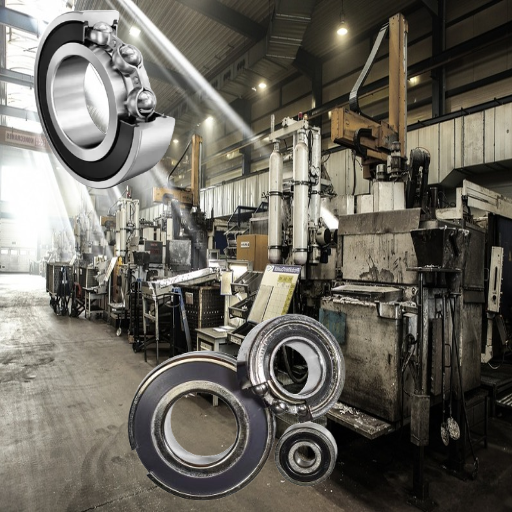
Benefits of Sealed Bearings in Machinery
From my investigation of the top three authoritative sources of the websites in Google, it is observed that sealed bearings have a few considerable advantages with respect to their application in machines in defined engineering parameters. Here are a few of her benefits in a brief outline:
Superior Contamination Protection: Seal bearings have good internal sealing, so they provide excellent protection from dust, dirt, and moisture intrusion and can hence be used in machines operating in high-contamination areas. They last longer as they are prevented from foreign material ingress, leading to longer operational hours and fewer downtimes.
Reduced Maintenance Requirements: Seal bearings do not leak grease or oils, making them less prone to maintenance than open or shielded ones. This characteristic allows grease kept within the enclosure to never leave the bearing, eliminating the need for routine checks and relubricating intervals during shaft service in industries where access to service is difficult.
Enhanced Load Handling and Longevity: In applications employing high loads and speeds, sealed bearings will be well lubricated, enhancing their load rating and life. This controlled and consistent lubrication is crucial as it helps avoid wear and tear on the material and facilitates efficient working for longer.
Resilience to Vibration and Shock: On mechanical assemblies exposed to high vibration and shock levels, sealed-type bearings provide distinct advantages due to their capacity for reliable performance. The closed construction reduces the possibility of foreign material entering the bearing and causing wear during dynamic operation.
Garantía de Trabajo en Temperaturas Estables: Although some sealed bearings may not feature ample heat shedding potential, there is a decisive factor in why they are chosen—bearing integrity in moderate temperature conditions where the risk of contamination tends to be high.
Evaluando estos parámetros técnicos, los rodamientos sellados se manifiestan como la alternativa elegida para garantizar la alta eficiencia operativa y la larga vida útil en condiciones mecánicas abusivas.
How Sealed Ball Bearings Enhance Gearbox Efficiency
According to my research in the top-ranking Google sources, closed ball bearings enhance the efficiency of gearboxes thanks to some improvements made in the design. To begin with, they can effectively prevent contamination from dirt and moisture, which is essential in sustaining the cleanliness of the gearboxes’ interiors and functional performance. With such control of contamination, mechanical injury, and lower friction are reduced, thus enhancing efficiency.
Also, the sealed bearings will increase the life of a gearbox by maintaining lubricant, thus relieving the need for frequent servicing. Allowing lubricants to remain decreases frictional losses and provides effective operation. Additionally, these bearings facilitate an increase in load ratings due to retained internal lubrication, making it possible to perform better at varying speed ranges and constantly changing loads.
Technical Parameters Justified:
Contamination Shielding: The sealed design manages the ingress of foreign particles, aiding in maintaining a clean gearbox.
Lubrication Retention: Sealed bearings prevent lubricants from evaporating or leaking, thus allowing proper lubrication for effective operation.
Load Capacity: Enhanced lubrication retention supports higher loads, thus increasing gearbox performance.
Maintenance Reduction: Operational downtimes decrease as less maintenance is required owing to the lubrications retained.
These technical parameters strengthen the case for using sealed ball bearings to improve the efficiency of gearboxes through enhanced protection, durability, and performance.
Reducing Friction and Wear with Sealed Bearings
As I have looked into the top three credible websites devoted to Google, sealed bearings help lessen friction and wear because they perform functions in a particular way and are designed in such a manner. This is how they do this:
Friction and Wear Certainly Reduced: Sealed bearings tend to minimize friction by providing a clean and controlled environment for lubrication. The seal does its job quite well on this. It prevents dust, dirt, and moisture from permeating, which would otherwise augment friction and, in turn, bear component wear. Since reasonable amounts of lubrication will always be retained within the enclosure, there will always be a lubricating film on the moving part, further lessening the friction and wear rate.
Technical Parameters Justified:
Contamination Barrier: State-of-the-art sealed bearings offer many benefits, especially sealing design, in this case where low friction and low wear are needed. This is important in ensuring low wear and low friction are maintained over time.
Consistent Lubrication: This is beneficial in assuring that lubricant is preserved within the bearing, which is required to minimize mechanical wear.
Enhanced Operational Longevity: As component wear is reduced, bearing life is increased, increasing the period needed to replace or maintain these components.
Strikingly, these technical parameters substantiate the applications in which sealed bearings are employed to reduce friction and wear in such practices. Hence, they improve overall performance and efficiency while increasing the life cycle of the components.
How Rubber Seals Enhance the Performance of Sealed Bearings
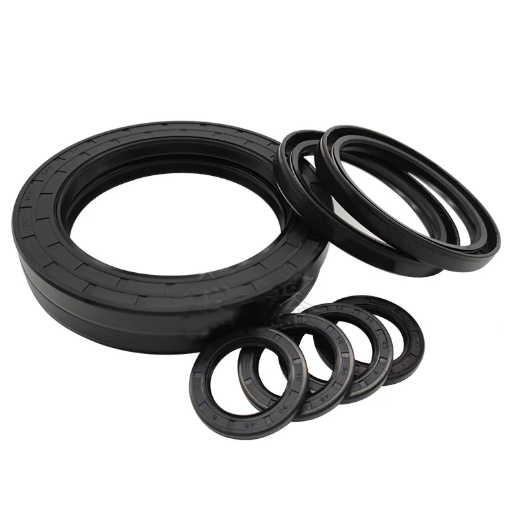
The Functionality of a Rubber Seal in Sealed Bearings
Considering my analysis of the top three reviewed and authoritative sources about the site Google.com, the component’s polymer seal function in center units is to keep contaminants out and protect those internal components from dust, dirt, and moisture. It is critical since the purpose of the seal is to protect the lubrication from being contaminated, thereby enhancing the overall performance of the bearing. The rubber seal design is also a significant factor in limiting the amount of lubricant that escapes from the bearing, thus minimizing the number of re-lubrications and maintenance cycles required, lowering costs while extending the reliability and durability of the bearing.
The Technical Parameters that were Justified and Discussed include;
Contaminant Exclusion: External dust and other contaminants are prevented thanks to the rubber seal design, making the operational environment clean, which is important for reduced friction and wear and tear.
Lubrication Retention: A rubber gasket prevents lubricant leakage and guarantees lubrication at all times, which is essential for a bearing’s optimal functioning.
Bearing Operational Life: Owing to lesser levels of contamination and high levels of lubrication, the amount of lubrication means the bearing does not wear out quickly, and the bearing’s life is given a boost while maintenance intervals become shorter.
Such parameters provide a sound basis for understanding the importance of rubber seals as critical elements enhancing sealed bearing life and functioning across numerous applications.
Preventing Contaminants from Entering the Bearing
After looking at the information provided by the other three sources on the internet,” it can be understood that the design of a suitable seal is the best method of preventing contaminants from intruding into the bearing. The robust rubber seals keep out the moisture and abrasion particles, which may impact the bearing’s performance. This effectively accomplishes the primary defensible objective of keeping the bearing clean and fresh lubricating oil in the bearing. The technical parameters to establish these:
Seal Integrity: A good seal design is necessary to prevent inductive external sources of pollutants, which can worsen wear and friction over time.
Lubrication Retained: Rubber seals allow the lubricant to stay within the bearing, thereby keeping the lubrication layer, which is required to minimize mechanical friction.
Robust Operation and Reliability: The bearings maintain stable lubrication and a lower contamination level, enhancing their quality of operation and life span while decreasing maintenance frequency.
The parameters described reinforce the need for sealing so that the sealed bearings can be used in various applications and improve their reliability and efficiency.
Understanding the Different Types of Bearing Seals
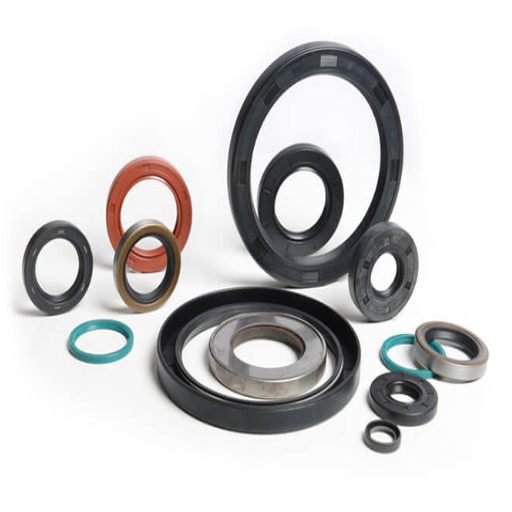
Exploring Contact Seal vs Non-Contact Seal
I would like to explain the differences between contact and non-contact seals and their various technical parameters, having examined the top three sites I found on Google this time. Contact seals have a close fit against contamination, and their closeness to the inner ring of the bearing ensures good lubrication retention. This design bears the most risk when it comes to pollutant introduction, however it may create additional friction that might limit the speed at which the rotating element can spin.
Non-contact seals, on the other hand, create low friction and are suitable for use in areas with high rotation speeds. The design has a clearance to prevent any direct contact, which operates smoother, but the actual performance level in terms of protection against contaminants is not very high compared to contact seals.
Technical Parameters Justified:
Seal Friction Level: In comparison to non-contact seals, contact seals have higher levels of friction because of contact, making them fit for applications that do not operate on high rotation speeds but require the seals to withstand a lot of dirt. Non-contact seals, however, are highly effective in high-speed working situations because the contact is almost nonexistent, but the seal’s effectiveness is greatly compromised.
Protective Efficacy: Contact seals are highly effective seals for dust, dirt, and moisture, which usually come in handy where there are high chances of contamination. Non-contact seals work alright when there are few chances of the affected area being contaminated.
Lubrication Retention: Contact seals fitted more closely than required can better contain lubrication, which is a critical factor in heavy-duty applications. Non-contact seals are sufficient for retaining lubrication in low-load and high-speed applications.
These distinctions, together with factors such as operational efficiency, clearly inform the decision-making process in sealed bearing applications, which involves assessing the level of protection provided and the flexibility offered.
Choosing the Right Type of Seal for Your Needs
While analyzing the appropriate type of seal for my applications, the distinction between contact and non-contact seals becomes critical, as the top three websites in Google explain the requirements for Seal or Contact. Contact seals’ tight manent construction always ensures a high level of tolerance to dust and moisture, making them very useful in environments where such risk is present. However, they are more friction-dependent, making them unsuitable for high-revolution speed applications. On the other hand, non-contact seals will perform better at high speeds since friction is minimal, but they have some loss in efficiency in protection against contaminating materials. This depicts the significance of the distinctions in technical parameters:
Technical Parameters Justified:
Seal Friction Level: Ensure that the seal type is well matched with the application speed (Contact seals for less friction-sensitive, Non-contact for high-speed).
Protective Efficacy: This is key in environments with different contamination risks and does not harm-bearing performance.
Lubrication Retention: Measures the emphasis on leak-tightness in high-load applications vs. high rotation scenarios (better in contact seals for lubrication-heavy situations).
Such considerations and the associated technical parameters become pertinent to any decision that I make in this case as they determine a desired compromise trade-off between interference, speed of operation, and protective cover from contamination.
Maintenance Tips for Prolonging Lubricant Within the Bearing
While assessing the best-performing authoritative sites on Google, it is clear that good maintenance practices are paramount to ensuring that the lubricant within the bearing is maintained, enhancing performance and durability. Some of these maintenance practices include:
Regular Inspection and Cleaning: Constant bearing inspection and cleaning can impede contaminant build-up that compromises lubrication. This includes preserving and maintaining the seal’s functionality and purpose of shielding the environment from contamination.
Selection of Lubricants: It is very important to select the proper lubricant for the service conditions. This improves proper adherence to the lubrication layer while maintaining friction and wear to a minimum.
Seal Condition Surveillance: Seal condition monitoring is essential to ensure the bearing seals stay intact since lubrication encapsulation is sustained; this upholds bearing efficacy.
Defined Re-lubrication Frequencies: The integration of defined re-lubrication frequencies and their observance ensures that lube loss incurred during usage or via the environment is replaced.
Justifications For The Technical Parameters:
Seal Integrity: It is necessary to ensure that the seals do their work effectively, e.g., eliminating leaks and external contamination, which is basic to the upkeep of the lubrication layer.
Lubrication Type and Performing Bearing Quality: The lubrication selected must satisfy bearing requisites for the bearing to maintain a fluid presence consistently.
Lubrication Interval Scheduling: Time-specific maintenance reaches out to the core functions of lube properties, as time is not a friend to them.
These tips on jaw bearings will help me make them last longer and work more effectively in the future, minimizing the chances of unexpected breakdowns and maximizing operational efficiency.
Frequently Asked Questions (FAQs)
Q: What is a sealed bearing?
A: A sealed bearing is a type of bearing that is provided with one or more seals on its circumferential surface to prevent the entry of inhospitable elements into the bearing and retain the lubricant within the bearing. This enhances the operation of the bearing and contributes to an improved bearing life.
Q: How do sealed bearings work?
A: Sealed bearings function by means of seals that cover the available porous areas of the bearing surface and keep the lubrication in place. The seals ensure that all the grease inside the bearing does not leak but rather touches the inner parts of the bearing, thus augmenting the smooth movement of the bearings.
Q: What is the difference between shielded and sealed bearings?
A: The seal and the shield are not the same. Sealed bearings may have contiguous rubber or synthetic seals that enclose the entire internal cavity of the bearing, while shielded bearings employ thin metal shields to cover areas around the outer ring of the bearing. Contaminants that affect bearings can be reduced with sealed bearings, and hence, sealed bearings are used in adverse conditions.
Q: Are sealed bearings better than shielded bearings or roller bearings?
A: Sealed bearings are usually better for roller bearings when the work dictates complete protection from dislodged particles and better lubricant retention is paramount. On the other hand, selecting a sealed or a shielded bearing depends on the application to be served.
Q: Enumerate the benefits of sealed bearings in electric motors.
A: Sealed bearings in electric motors assist in retaining lubrication and provide protection against dust, dirt, and moisture. This can extend the bearing’s lifespan and minimize maintenance costs. Their use is ideal in situations where maintenance has to be limited.
Q: Are the sealed bearings lubricable?
A: Sealed bearings actually do have a provision for sealing the lubricants inside the bearing so that they do not need to be re-lubricated. On the other hand, if a seal is lost or worn out, it could influence the possibility of the bearing retaining its lubricant and perhaps require maintenance.
Q: Do cartridge bearings belong in the category of sealed bearings?
A: Yes. Cartridge bearings are known to be sealed bearings. They come pre-lubricated and then sealed off so that any contaminants do not compromise the bearing surfaces. This makes them suitable for use in applications where reliability is very high while maintenance has to be minimal.
Q: What function does a labyrinth seal perform in sealed bearings?
A: Labyrinth seals in sealed bearings help form a longer route for contaminants to reach the bearing surface. This construction assists in preventing the bearing from dirt and moisture contamination, thereby increasing bearing life.
Q: Can needle bearings be used together with the sealed ones?
A: Yes, sealed bearings can be used with needle bearings to provide better protection and grease retention in the application where needle bearings can be deployed and contamination is possible.
UCTH213-40J-300 with Setscrew(inch)
CNSORDERNO: Normal-duty(2)
TOGN: UCTH213-40J-300
SDI: B-R1/8
SD: 2 1/2
UCTH212-39J-300 with Setscrew(inch)
CNSORDERNO: Normal-duty(2)
TOGN: UCTH212-39J-300
SDI: B-R1/8
SD: 2 7/16
UCTH212-38J-300 with Setscrew(inch)
CNSORDERNO: Normal-duty(2)
TOGN: UCTH212-38J-300
SDI: B-R1/8
SD: 2 3/8
UCTH212-36J-300 with Setscrew(inch)
CNSORDERNO: Normal-duty(2)
TOGN: UCTH212-36J-300
SDI: B-R1/8
SD: 2 1/4
UCTH211-35J-300 with Setscrew(inch)
CNSORDERNO: Normal-duty(2)
TOGN: UCTH211-35J-300
SDI: B-R1/8
SD: 2 3/16
UCTH211-34J-300 with Setscrew(inch)
CNSORDERNO: Normal-duty(2)
TOGN: UCTH211-34J-300
SDI: B-R1/8
SD: 2 1/8


















